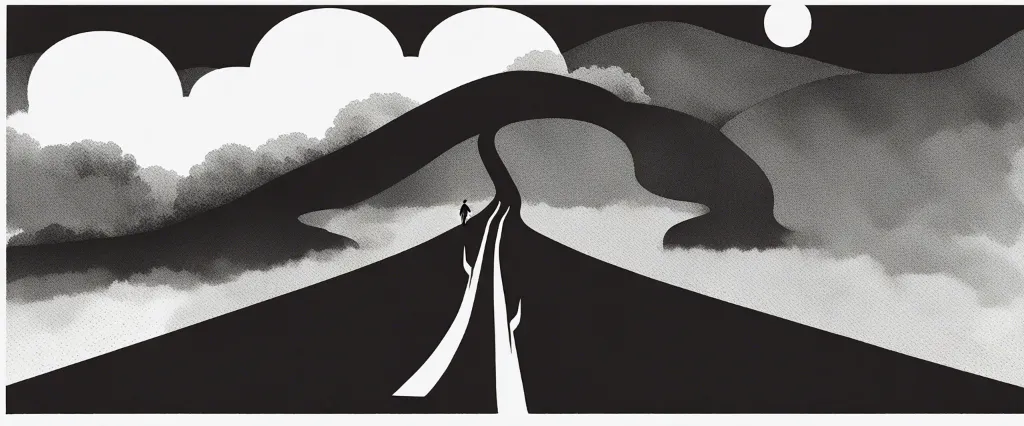In her transformative book, “The Dark Side of the Light Chasers,” acclaimed author Debbie Ford delves into the unexplored depths of our psyche, offering profound insights into the hidden aspects of our personalities. Ford, renowned for her expertise in the field of human potential, guides readers toward embracing their shadow self, helping them uncover the powerful wisdom that resides within their own darkness. Drawing upon her extensive experience as a teacher, coach, and motivational speaker, Ford invites us on a journey of self-acceptance and empowerment. With her authentic voice and compassionate storytelling, she inspires individuals to embrace the entirety of their being, discovering the freedom and liberation that awaits on the other side.
Chapter 1: Embracing Your Shadow
Chapter 1 of The Dark Side of the Light Chasers by Debbie Ford, titled “Embracing Your Shadow,” introduces readers to the concept of the shadow self and its significance in personal growth and self-acceptance. Ford explains that the shadow self encompasses all the suppressed and rejected aspects of our personality, including our fears, insecurities, and past traumas.
The chapter begins by highlighting how society conditions us to believe that only certain traits are acceptable while others are deemed undesirable or negative. Consequently, people tend to repress or hide these unacceptable qualities, disconnecting from a significant part of their authentic selves. Ford emphasizes that truly embracing and understanding our shadow side is crucial for personal healing and growth.
To illustrate this concept, Ford uses examples from her own life and shares stories of her clients who struggled with accepting their shadow selves. By helping readers recognize that we all have a shadow side and that it is a natural and necessary part of our being, she sets the stage for the transformative work that follows.
The chapter concludes by urging readers to acknowledge and honor their shadow selves. Ford explains that by integrating these suppressed aspects into our consciousness, we can uncover hidden strengths and tap into our full potential. This process of embracing the shadow self allows for greater self-love, acceptance, and understanding.
Chapter 2: Recognizing the Masks We Wear
In Chapter 2 of “The Dark Side of the Light Chasers” by Debbie Ford, titled “Recognizing the Masks We Wear,” the author delves into the concept of masks we put on to hide our true selves and explores their impact on our lives. Ford explains that we develop these masks as a way to protect ourselves from pain, rejection, and vulnerability. However, these masks also prevent us from living authentically and inhibit our personal growth and happiness.
Ford emphasizes the importance of recognizing the various masks we wear, both to understand ourselves better and to free ourselves from their constraints. She identifies nine common masks, including the perfectionist, the people pleaser, the overachiever, and the victim, among others. Each mask serves a specific purpose and shields us from certain emotions or experiences.
The author encourages readers to reflect on their own lives and identify which masks they wear. She provides thought-provoking questions and exercises to aid in this process of self-discovery. Ford explains that recognizing these masks is the first step towards healing and transformation. Only by uncovering and accepting our shadow aspects, the hidden parts of ourselves that we may deem unacceptable, can we begin to integrate our whole selves and live more fulfilling lives.
Ultimately, Chapter 2 of “The Dark Side of the Light Chasers” serves as a wake-up call, urging readers to shed their masks and embrace their true selves. Ford believes that by acknowledging and embracing our dark side, we can find balance, self-acceptance, and ultimately, a deeper connection with ourselves and others.
Chapter 3: Uncovering Hidden Beliefs and Patterns
Chapter 3 of “The Dark Side of the Light Chasers” by Debbie Ford focuses on uncovering hidden beliefs and patterns within ourselves. Ford highlights how our beliefs and patterns can limit our potential for growth and happiness.
The chapter begins by emphasizing the importance of self-reflection and introspection to identify and understand these hidden aspects of ourselves. Ford encourages readers to explore their thoughts, actions, and emotions to discover any negative beliefs that may be holding them back.
The author introduces the concept of the shadow, which represents the repressed or suppressed aspects of our personality that we deem undesirable or unacceptable. She explains that these shadows can manifest in various ways, such as self-sabotage, destructive behaviors, or patterns of victimhood.
Ford provides exercises to help readers identify their shadows, such as listing their limiting beliefs and recognizing patterns of behavior that may stem from these beliefs. By shining a light on these hidden parts of ourselves, we can begin to understand how they have influenced our lives and limited our potential.
Through the exploration of hidden beliefs and patterns, Ford asserts that we can gain a deeper understanding of ourselves and release the power they hold over us. She suggests working through these shadows and integrating them into our whole self, ultimately leading to self-acceptance and personal growth.
In conclusion, Chapter 3 of “The Dark Side of the Light Chasers” delves into the importance of uncovering hidden beliefs and patterns within ourselves. By acknowledging and integrating our shadows, we can overcome self-limiting beliefs and experiences, leading to a more fulfilling and authentic life.
Chapter 4: Healing Inner Wounds and Traumas

Chapter 4 of “The Dark Side of the Light Chasers” by Debbie Ford focuses on healing inner wounds and traumas. Ford explains that throughout our lives, we have experienced various painful events that have caused us emotional and psychological scars. These wounds, although buried deep within us, continue to affect our lives and create unconscious patterns of behavior.
The chapter begins by discussing the concept of the wounded child archetype, which represents the wounded and vulnerable parts of ourselves that we carry into adulthood. Ford emphasizes that acknowledging and addressing these wounds is crucial for personal growth and emotional well-being.
To heal these inner wounds and traumas, Ford introduces the process of “shining the light” of awareness on our shadow selves. By shining a light on the aspects of ourselves that we tend to reject or deny, we can begin to understand and integrate these wounded parts. She encourages readers to engage in self-reflection and identify the specific wounds that have shaped their self-perception and behaviors.
Ford provides practical exercises and tools for healing, such as journaling and visualization techniques. She guides readers to examine the events and experiences that triggered their wounds, and then offers steps to release negative emotions and transform self-limiting beliefs. Ultimately, by facing and embracing our inner wounds, we can begin to reclaim the power and energy that was lost through these traumatic experiences.
In conclusion, Chapter 4 of “The Dark Side of the Light Chasers” emphasizes the importance of healing inner wounds and traumas for personal growth. By shining a light of awareness on our shadow selves, we can integrate our wounded parts and reclaim our power. Through self-reflection and specific healing exercises, readers are guided to release negative emotions, transform self-limiting beliefs, and create a more whole and empowered sense of self.
Chapter 5: Integrating the Shadow Self
Chapter 5 of “The Dark Side of the Light Chasers” by Debbie Ford is titled “Integrating the Shadow Self.” In this chapter, Ford explores the concept of our shadow self and how we can work towards integrating it into our lives.
The shadow self represents the parts of ourselves that we hide, repress, and deny. These aspects may include our fears, insecurities, anger, or even our desires and talents that we are afraid to acknowledge. Ford emphasizes that it is vital to recognize and accept our shadow self, as denying it only leads to internal conflict and a lack of wholeness.
To embrace our shadow self, Ford presents a series of exercises for self-reflection and exploration. One exercise involves identifying the traits and qualities in others that we feel triggered by or judge negatively. These triggers often point to aspects of our own shadow self that we are not willing to confront. By acknowledging and accepting these traits, we can begin the process of integration and personal growth.
Ford also provides guidance on how to work with dreams, another powerful avenue for exploring the shadow self. Dreams often serve as a bridge to our unconscious, revealing hidden aspects of ourselves that need attention. By interpreting our dreams and reflecting on their messages, we can gain insight into our shadow and take steps towards integration.
Ultimately, to integrate our shadow self means to recognize and embrace the totality of who we are, both light and dark. By doing so, we can tap into our hidden potentials, heal past wounds, and live more authentically. Ford provides practical tools and techniques to embark on this journey of integration, encouraging readers to release judgment and fear, and instead welcome the wholeness that comes from acknowledging all aspects of ourselves.
Chapter 6: Embracing the Wholeness Within
Chapter 6 of “The Dark Side of the Light Chasers” by Debbie Ford, titled “Embracing the Wholeness Within,” emphasizes the importance of acknowledging and integrating the shadow aspects of our personalities. Ford explains that our shadow comprises the traits, emotions, and desires we repress or deny. These shadow aspects might include anger, jealousy, fear, or selfishness, among others. The chapter highlights the significance of embracing and accepting these qualities rather than burying or rejecting them.
Ford argues that facing and integrating our shadows allows us to live with authenticity and freedom. By accepting these aspects, we activate their positive attributes and prevent them from manifesting destructively in our lives. She advises readers to explore their shadow traits by identifying the patterns and situations that trigger their negative emotions. By dissecting these reactions, individuals can learn valuable insights about themselves and their hidden aspects. Ford also encourages readers to embrace and express their positive shadow qualities since these can be sources of creativity, strength, and vitality.
Moreover, Ford emphasizes the importance of self-forgiveness and self-compassion in the journey of shadow integration. She explains that self-judgment only reinforces the divide between our light and dark sides. Instead, cultivating self-love and understanding allows us to create a sense of wholeness within ourselves.
In summary, Chapter 6 of “The Dark Side of the Light Chasers” provides an in-depth exploration of the concept of shadow integration. It encourages readers to confront and integrate their shadow aspects, leading to authenticity, self-acceptance, and emotional freedom. Through this process, individuals can create a more complete and integrated sense of self.
Chapter 7: Transforming Fear into Empowerment
Chapter 7 of “The Dark Side of the Light Chasers” by Debbie Ford is titled “Transforming Fear into Empowerment.” In this chapter, Ford explores the concept of fear as a powerful force that can hinder personal growth and transformation. She suggests that embracing and understanding our fears can lead to empowerment and a newfound sense of freedom.
Ford begins by acknowledging that fear is a natural part of being human and that suppressing or avoiding it only fuels its power over us. She encourages readers to confront their fears head-on and recognize that they are merely illusions created by the mind. By coming face-to-face with these fears, individuals can disarm their power and transform them into sources of strength.
The author presents various exercises and techniques to help readers identify, explore, and challenge their fears. She emphasizes the importance of self-acceptance and compassion throughout this process, reminding readers that everyone has fears and imperfections. By understanding and accepting our own fears, we can develop empathy and compassion for others.
Ford also highlights the role of forgiveness in overcoming fear. She explains that forgiving oneself and others is vital for personal growth and liberation from fear. The author guides readers through forgiveness exercises to release any past hurts and resentments that may be holding them back.
Ultimately, Ford believes that transforming fear into empowerment requires a shift in mindset. Instead of viewing fear as something to be avoided or suppressed, she encourages readers to embrace it as an opportunity for growth and self-discovery. By integrating our fears into our personal journey, we can tap into our true potential and live a more empowered and authentic life.

Chapter 8: Embracing the Light and Shadow for Personal Growth
Chapter 8: “Embracing the Light and Shadow for Personal Growth” of the book “The Dark Side of the Light Chasers” by Debbie Ford explores the concept of integrating both the light and shadow aspects of our personality in order to foster personal growth and healing.
Ford begins by emphasizing that we all possess both light and shadow qualities within us, and it is essential to acknowledge and accept both aspects for a balanced and fulfilling life. She argues that by embracing our shadows, we can uncover hidden gifts and strengths that can contribute to our personal development.
The chapter delves into the ways in which individuals tend to deny or disown their shadow aspects, fearing judgment and rejection. However, Ford emphasizes the importance of self-compassion and self-acceptance as prerequisites for growth. She encourages readers to acknowledge their shadow characteristics without judgment or shame, as doing so is crucial for personal transformation.
Furthermore, Ford discusses the transformative power of embracing your shadows, as it helps foster empathy, compassion, and understanding towards others. By empathizing with and integrating the shadow aspects of ourselves, we gain the ability to relate to others’ struggles and complexities.
The author also explains the significance of personal inventory, a process of exploring and accepting our shadow qualities. Through exercises and journaling prompts, Ford guides readers in identifying and examining their shadow characteristics. She emphasizes that this exploration should be approached with love and curiosity, allowing individuals to dismantle the self-critical beliefs they might hold.
In conclusion, Chapter 8 focuses on the importance of embracing both light and shadow aspects of our personality for personal growth. By integrating and accepting our shadows, we can tap into hidden strengths, foster self-compassion, and develop empathy towards others. Through personal inventory and exploration, individuals are encouraged to confront their shadows without judgment, thus embarking on a transformative journey toward self-discovery and healing.
After Reading
In conclusion, “The Dark Side of the Light Chasers” by Debbie Ford explores the concept of shadow and guides readers on a journey to integrate their hidden, denied, or suppressed aspects. By shedding light on our perceived flaws, fears, and insecurities, Ford encourages us to embrace all parts of ourselves. She emphasizes the importance of self-acceptance and self-love in order to live a balanced and authentic life. Through personal stories and practical exercises, Ford provides valuable insights and tools to help readers heal, transform, and ultimately find wholeness by embracing their dark side. This book serves as a powerful resource for anyone seeking personal growth, emotional healing, and spiritual enlightenment.
1. The Power of Your Subconscious Mind” by Joseph Murphy: This classic self-help book delves into the power of the subconscious mind and how it can be harnessed to transform one’s life. It offers practical techniques to uncover and integrate the hidden aspects of ourselves, bringing about positive change.
2. “Radical Acceptance: Embracing Your Life With the Heart of a Buddha” by Tara Brach: In this compassionate and insightful book, Brach explores the concept of radical acceptance, which involves embracing all aspects of ourselves, including the shadow side. Through mindfulness practices and self-reflection, readers can cultivate self-compassion and heal deep emotional wounds.
3. “The Untethered Soul: The Journey Beyond Yourself” by Michael A. Singer: In this transformative guide, Singer provides profound insights into the human condition and offers practical tools to achieve true inner freedom. By exploring the many layers of the self, the book empowers individuals to cultivate awareness, let go of limiting beliefs, and tap into their authentic self.
4. “The Shadow Effect: Illuminating the Hidden Power of Your True Self” by Deepak Chopra, Debbie Ford, and Marianne Williamson: This collaborative work by three renowned spiritual teachers explores the concept of the shadow and its impact on our lives. Drawing from personal experiences and spiritual wisdom, the authors guide readers on a journey of self-discovery and integration, helping them embrace their inherent wholeness.
5. The Four Agreements: A Practical Guide to Personal Freedom” by Don Miguel Ruiz: In this popular book, Ruiz presents four powerful agreements that can transform one’s life. By exploring the barriers to personal growth and revealing how our thoughts and beliefs shape our reality, the book encourages readers to reclaim their power and live with authenticity, integrity, and love.




